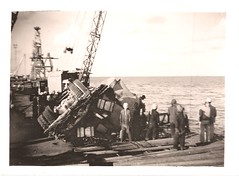Last week I was in Wellington New Zealand, participating in the DEANZ 2008 Conference. I loved the conference theme, “my place, my space, my learning!” Oh yeah!
On the first morning I had the great opportunity to offer the kick off keynote. As usual, I firehosed my way through 90 minutes talking about stewarding technology for learning with an emphasis on PEOPLE. I tagged a few of the blog responses here along with some other DEANZ08 related links. Below are the slides that I used in the keynote. (I don’t think anyone captured audio):
I also facilitated two 2-hour workshops on Monday and Tuesday about the social and technical design of online communities. The notes from some of the exercises are embedded in a simple PPT which I will post on the wiki page – which is still a bit bare because I need to put in the notes, can be found here.
The conference was at the beautiful Te Papa Tongarewa museum – an amazing multimedia, multi-dimensional national museum of Aotearoa, New Zealand. Great staff, good conference food and a wonderful location rounded out the logistics side. Fabulous educators and presenters on the content side. I will write a separate post about that, but I promised to get the slides up…
On Wednesday I got to meet with some wonderful clients of Patillo, and on Thursday, Stephen Blythe of Community Central hosted a conversation which Steven blogged about. – Dags and Dingleberries
 I bemoan the fact that there is so much good stuff floating by me. Thank goodness for friends and colleagues like
I bemoan the fact that there is so much good stuff floating by me. Thank goodness for friends and colleagues like  A few months back, Josien Kapma and I were invited to write an article for the Dutch publication,
A few months back, Josien Kapma and I were invited to write an article for the Dutch publication, Michael Krigsman has a good story today on ZDNet about transparency and learning. He analyzes Amazon S3 team’s
Michael Krigsman has a good story today on ZDNet about transparency and learning. He analyzes Amazon S3 team’s